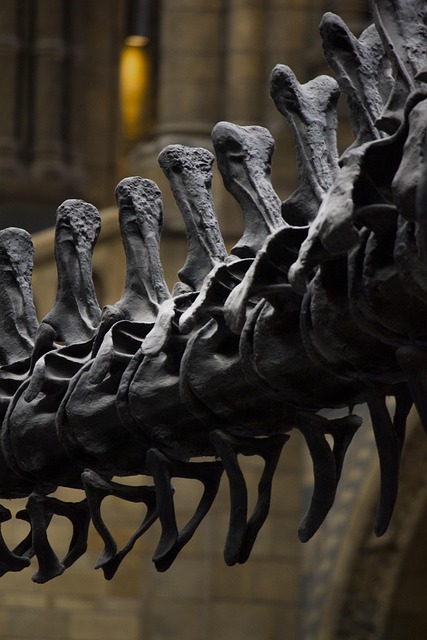Captivating Journeys: The Art of Tour Museum Experiences
In a world that thrives on instant gratification and rapid information dissemination, museums stand as bastions of culture, history, and art. They are places of wonder, education, and reflection, and when combined with expertly curated tour experiences, they transform into immersive journeys that captivate the hearts and minds of visitors. This article delves into the intricacies of crafting unforgettable museum tours—exploring methodologies, innovations, and the essence of storytelling that breathes life into the static exhibits.
The Philosophy of Museum Tours
Museum tours are more than mere walkthroughs; they are crafted experiences that blend education with emotion. The foundation of an impactful museum tour lies in its philosophy—the purpose it serves. Is it to inform, inspire, or provoke thought? Museums often engage in reflective practices to understand their visitors’ needs and interests. The aim is to create connections between the visitor and the exhibits, allowing for an enriching experience.
Understanding the Audience
One of the cardinal rules in crafting any compelling museum tour is the deep understanding of the audience. Different demographics—families, students, scholars, and tourists—have varied expectations and ways of engaging with art and history. Tour guides benefit from recognizing these distinctions, tailoring their narratives and interactions accordingly. This flexibility creates space for visitors to foster personal relationships with the exhibits, leading to an immersive and memorable experience.
Artistry in Storytelling
The art of storytelling plays a pivotal role in crafting tour experiences. A skilled tour guide serves as a storyteller, translating the often-complex narratives of the artifacts into relatable contexts. Each piece within a museum holds a narrative, a fragment of history waiting to be unveiled. The guide’s ability to weave these stories into compelling narratives transforms a simple observation session into an emotional voyage.
Engaging Narratives
When guides infuse humor, drama, and personal anecdotes into their stories, they elevate the visitor’s experience. A well-told story can invoke curiosity, provoke questions, and stimulate discussions among visitors. The emotional resonance of a narrative can lead to deeper engagement, allowing visitors to connect with the past in ways that merely displaying objects cannot achieve.
Multi-Sensory Experiences
In contemporary museums, the focus has shifted from purely visual experiences to multi-sensory encounters. Integrating sound, touch, and even scent into the museum tour can create powerful memories that resonate long after the visit. Art installations that encourage interaction or technologies such as augmented reality can enrich storytelling, making it accessible to diverse audiences.
Multimedia presentations can complement traditional tour guides by providing a layered understanding of exhibits. For example, interactive kiosks or virtual reality displays can offer insights into historical contexts, allowing visitors to engage with the art in innovative ways. Such multi-sensory elements, if executed thoughtfully, can transform a static museum visit into a dynamic experience.
Curatorial Excellence
The role of curators extends beyond arranging artifacts on display. They are integral to the crafting of tour experiences, ensuring thematic coherence and narrative flow. Curatorial decisions affect how exhibits are interpreted and experienced, as they determine which stories are told and how.
Interactive Exhibits
Today, many museums are choosing to break the traditional boundaries of curation by implementing interactive exhibits. When visitors can engage with displays—be it through puzzles, touchscreens, or hands-on activities—they become active participants in the learning process. This engagement often leads to a more profound appreciation and understanding of the subject matter, making the experience more rewarding.
The Role of Technology
In recent years, technology has revolutionized museum experiences. From mobile applications offering audio guides to smart devices providing in-depth information on specific items, technological advancement has expanded the landscape of museum tours. Moreover, live streaming of exhibits and virtual museum tours have gained popularity, especially in response to increasing global demands for accessibility.
Virtual Reality and Augmented Reality
Virtual reality (VR) and augmented reality (AR) have become powerful tools in enhancing museum experiences. VR allows individuals to explore past events, artwork, and even historical figures in immersive environments. Similarly, AR can overlay information onto real-world exhibits through smartphones or tablets, enriching the overall experience without replacing the need for physical interaction with artifacts.
Inclusivity in Museum Tours
Inclusivity is a significant aspect of modern museum practices. A captivating museum experience should engage visitors of all ages, backgrounds, and abilities. Institutions are increasingly developing tours that cater to various learning styles and physical needs. These initiatives range from providing sensory-friendly tours for individuals with autism to ensuring that guided tours are accessible in multiple languages.
Furthermore, developing programs centered on community involvement plays a vital role in broadening access to museum experiences. Engaging members of the community in exhibitions fosters a sense of belonging and ownership of cultural narratives, establishing lasting ties between the museum and the community it serves.
Field Trip Experiences
For many students, a museum visit can mark a significant milestone in their educational journey. School field trips remain a crucial opportunity for experiential learning, allowing children and young adults to step outside the classroom and engage directly with history and art. Developing engaging, curriculum-aligned tours can enhance learning outcomes, making history tangible and accessible.
Field trip tours can be designed with a focus on collaboration, encouraging students to work in groups and participate in interactive activities. Such formatted experiences allow young learners to absorb information through shared dialogues, stimulating creativity, critical thinking, and teamwork.
Evaluating Success: Feedback and Adaptation
Understanding the effectiveness of museum tours requires a commitment to evaluation and adaptability. Gathering feedback from visitors—through surveys, informal conversations, and observation—provides invaluable insights into their experiences. This data can inform future endeavors, leading to the evolution of tour offerings and enhancing their overall impact.
Moreover, visitor feedback can lead to revolutionary changes in how museums conceptualize their role in society. By inviting suggestions and analysis, museums position themselves as responsive entities that prioritize visitors’ voices, ultimately enriching the cultural value they provide.
Conclusion: The Future of Museum Experiences
As we look to the future, the art of tour museum experiences will inevitably continue to evolve. The integration of technology, storytelling, and community engagement will remain at the forefront as museums strive to be relevant in an ever-changing world. By embracing innovation while honoring their core missions, museums have the potential to create captivating journeys that resonate deeply within their visitors.
In a time where connection and understanding of our collective histories are increasingly vital, museums stand resilient—evolving not just as custodians of artifacts, but as transformative spaces for reflection, education, and connection. Captivating journeys through museums are not merely visits; they are profound opportunities to engage with human experience in its myriad forms.


